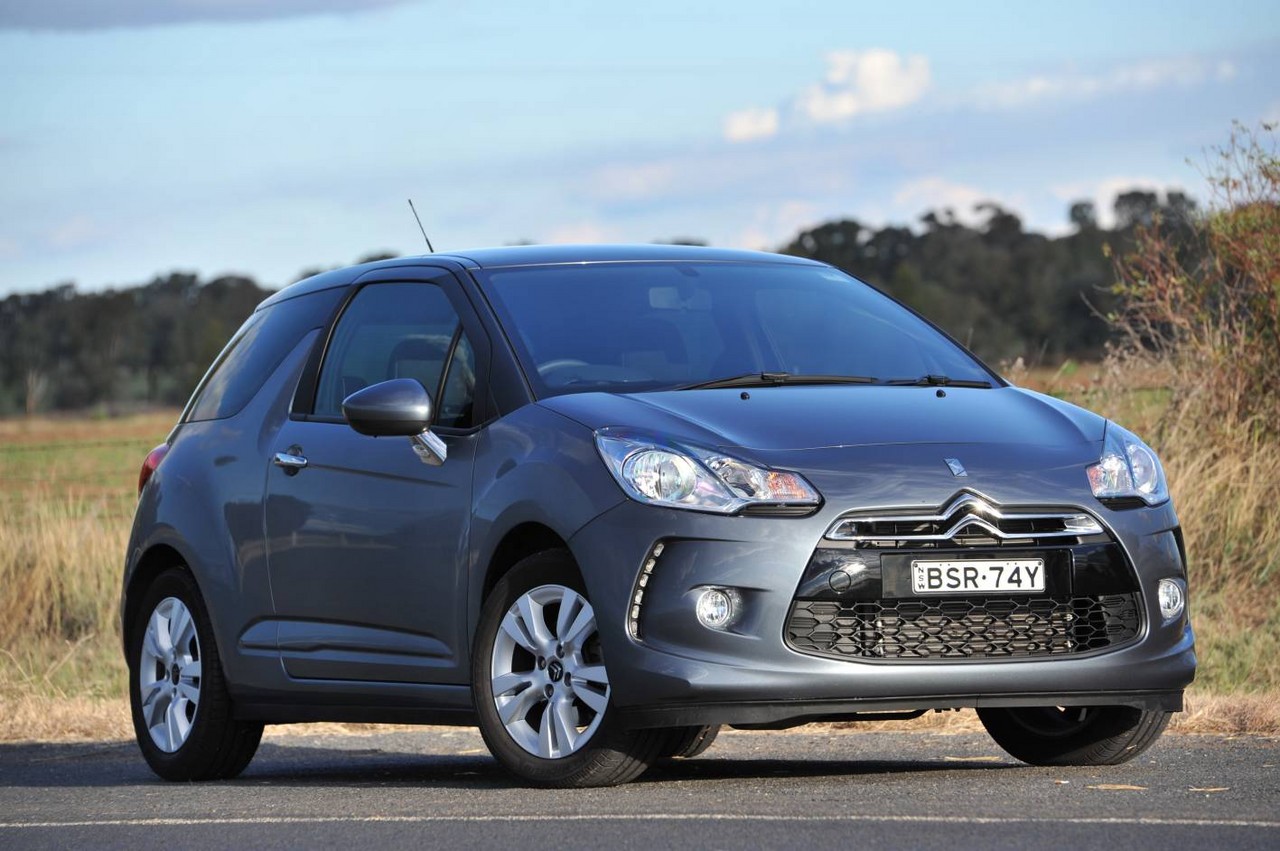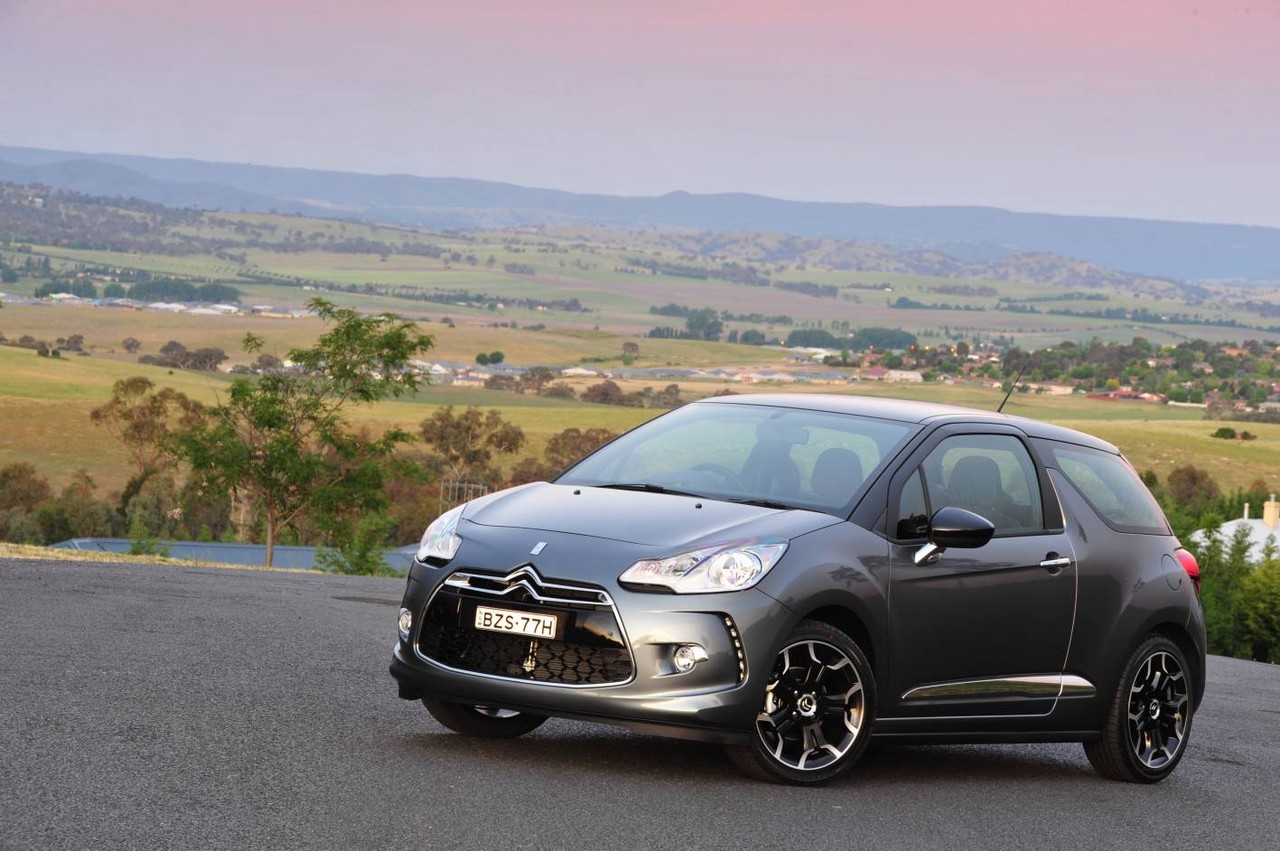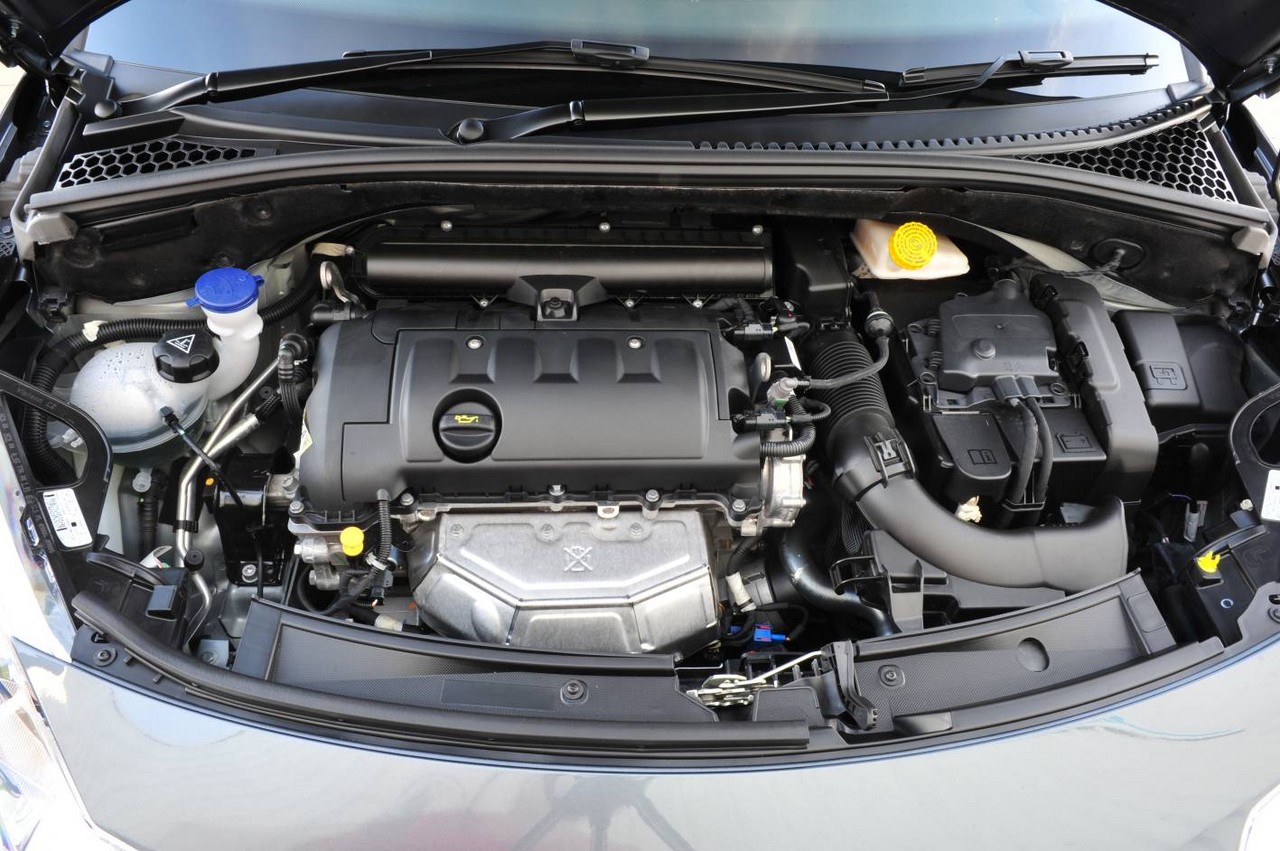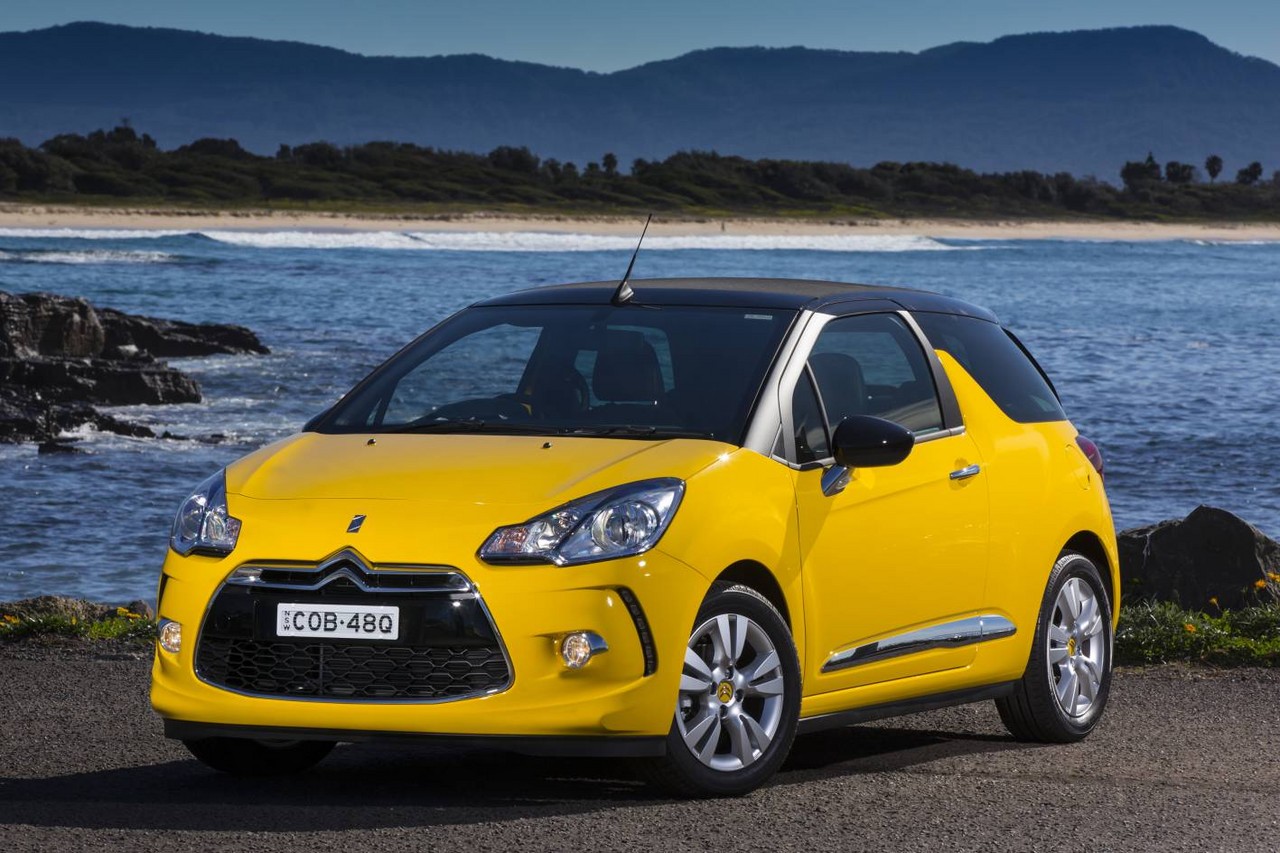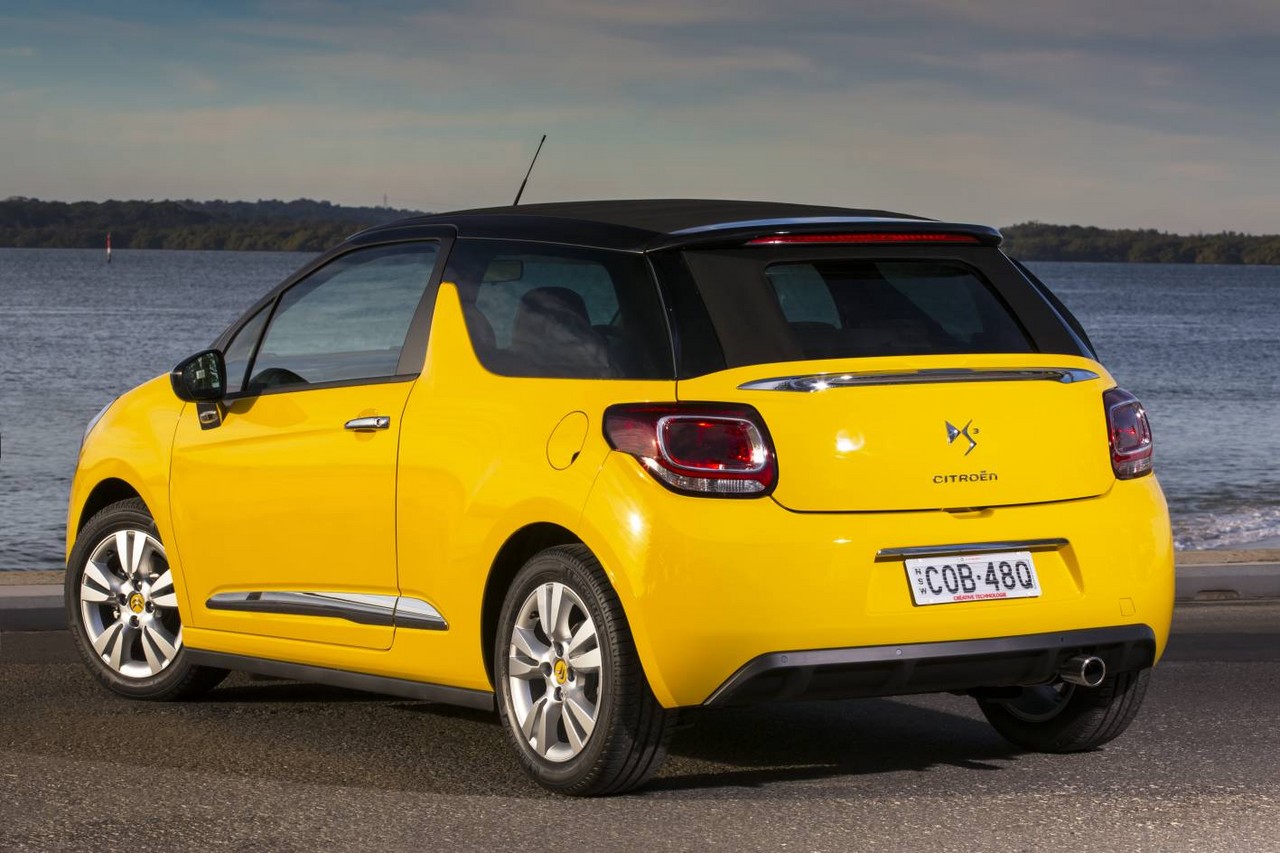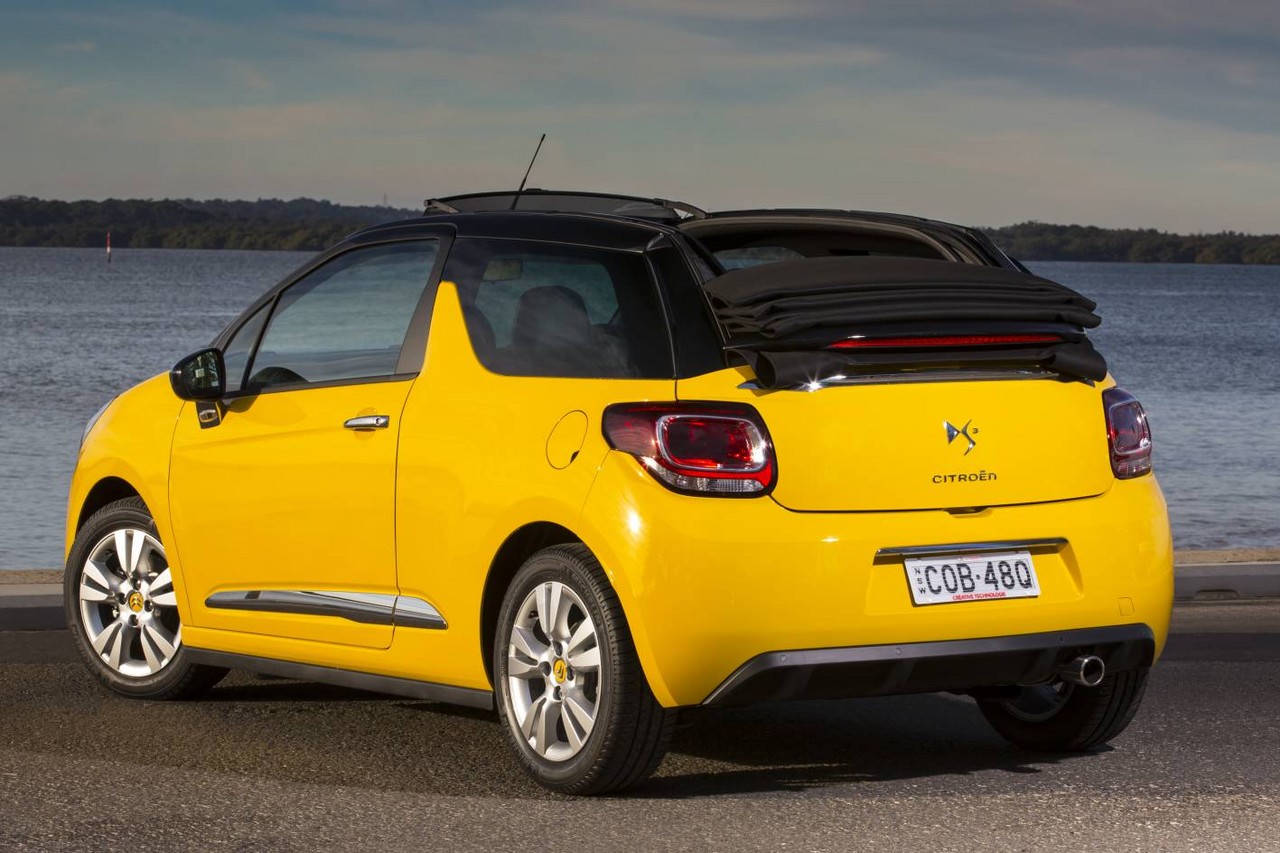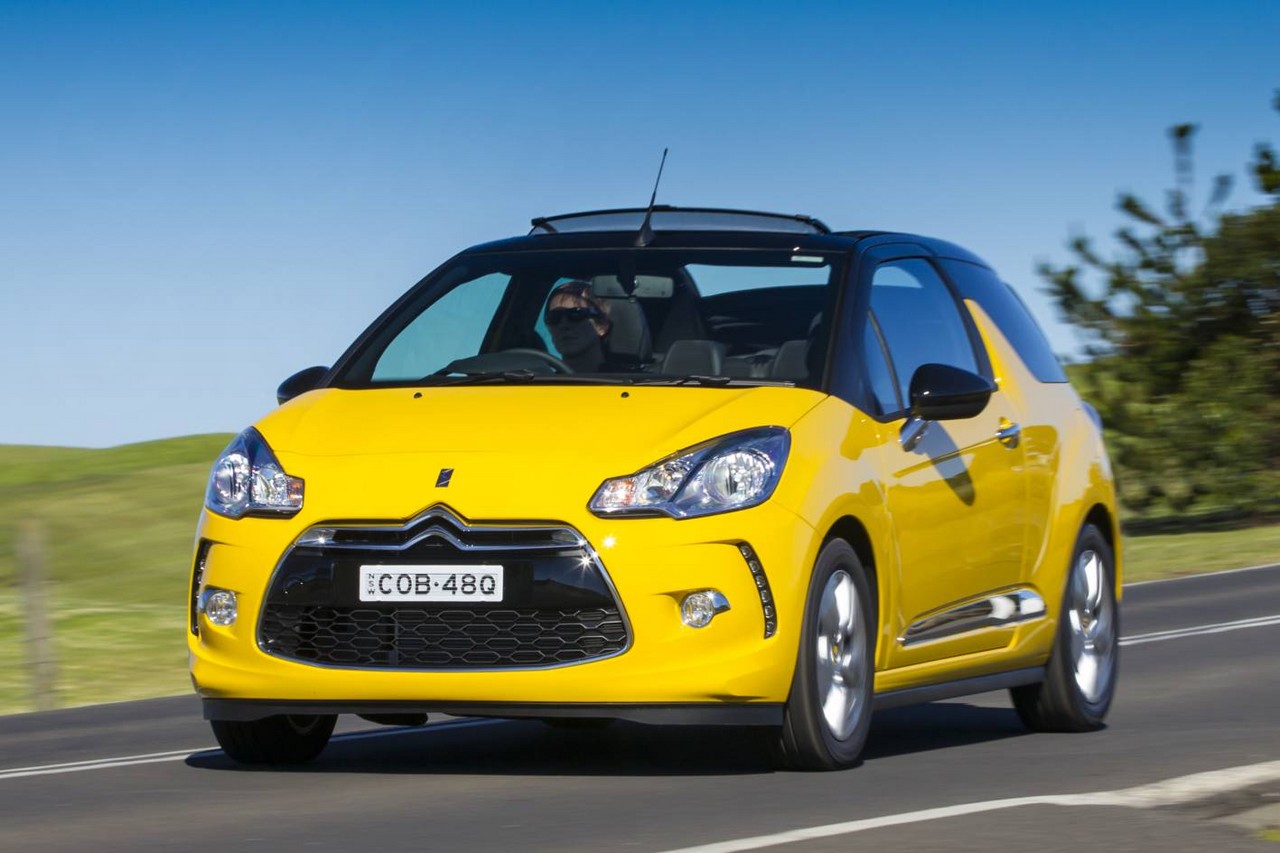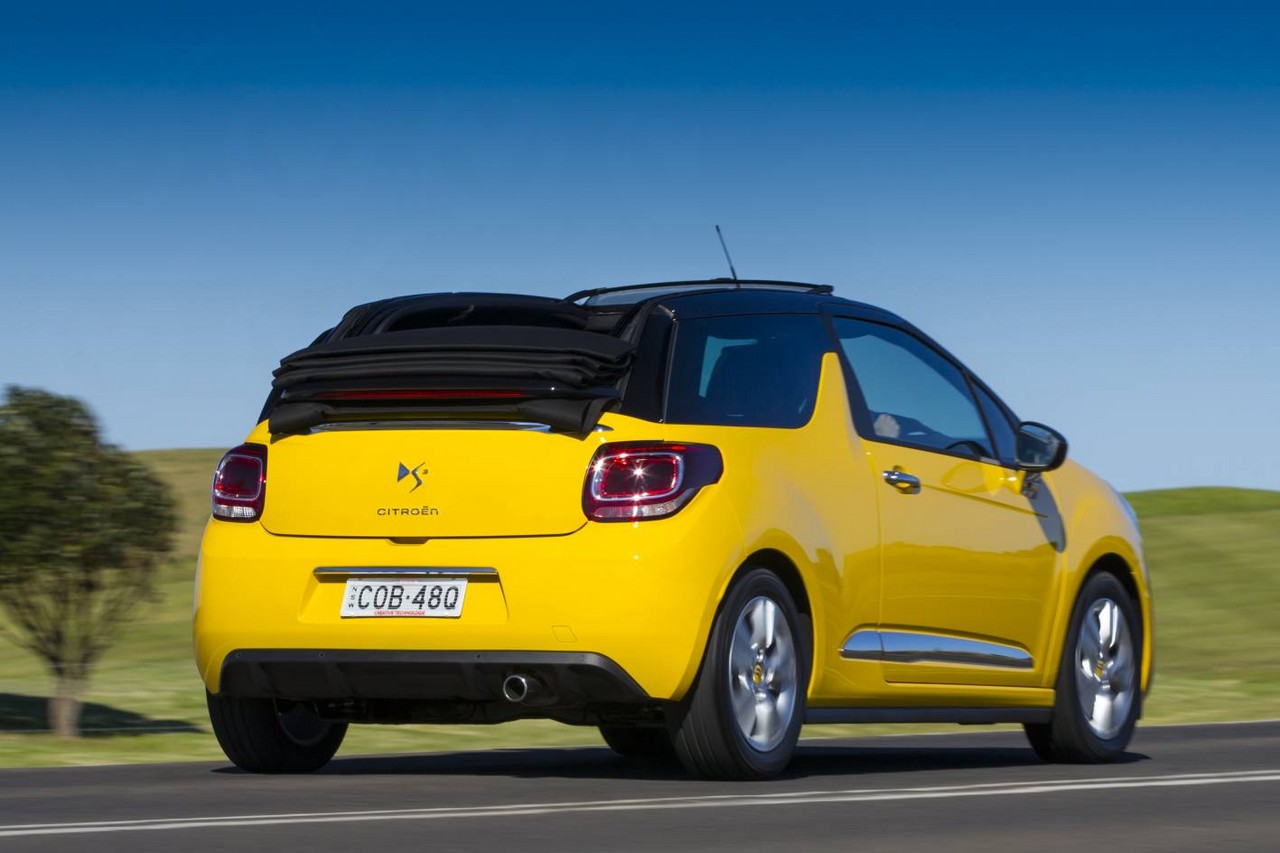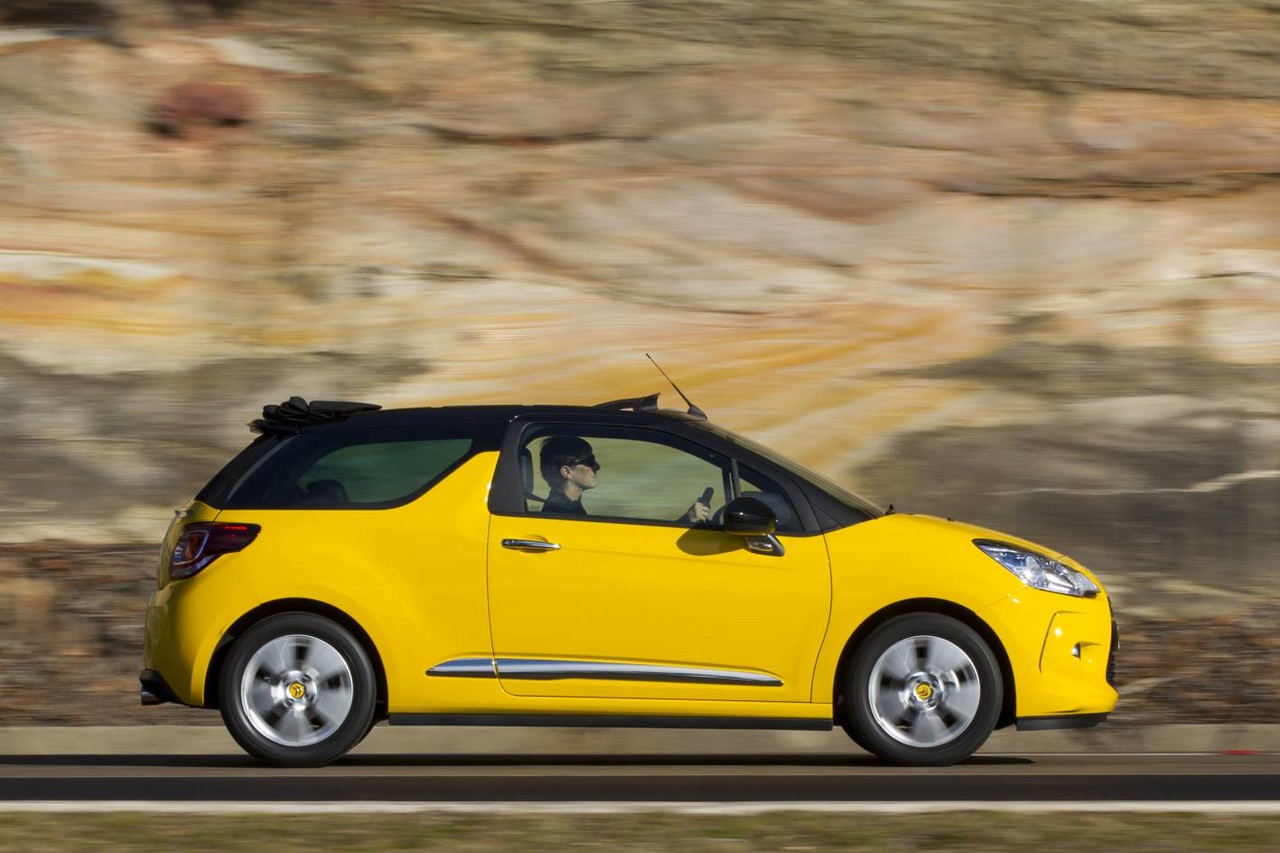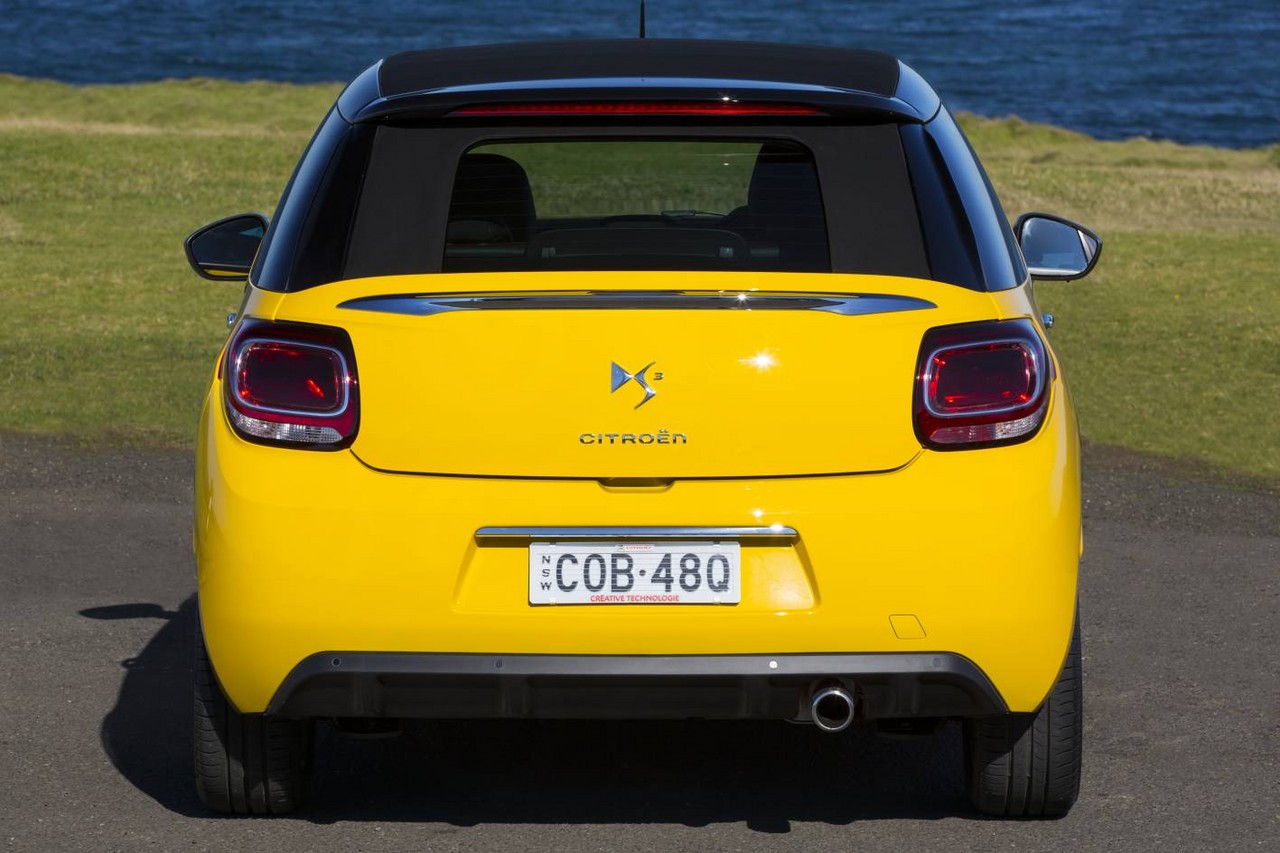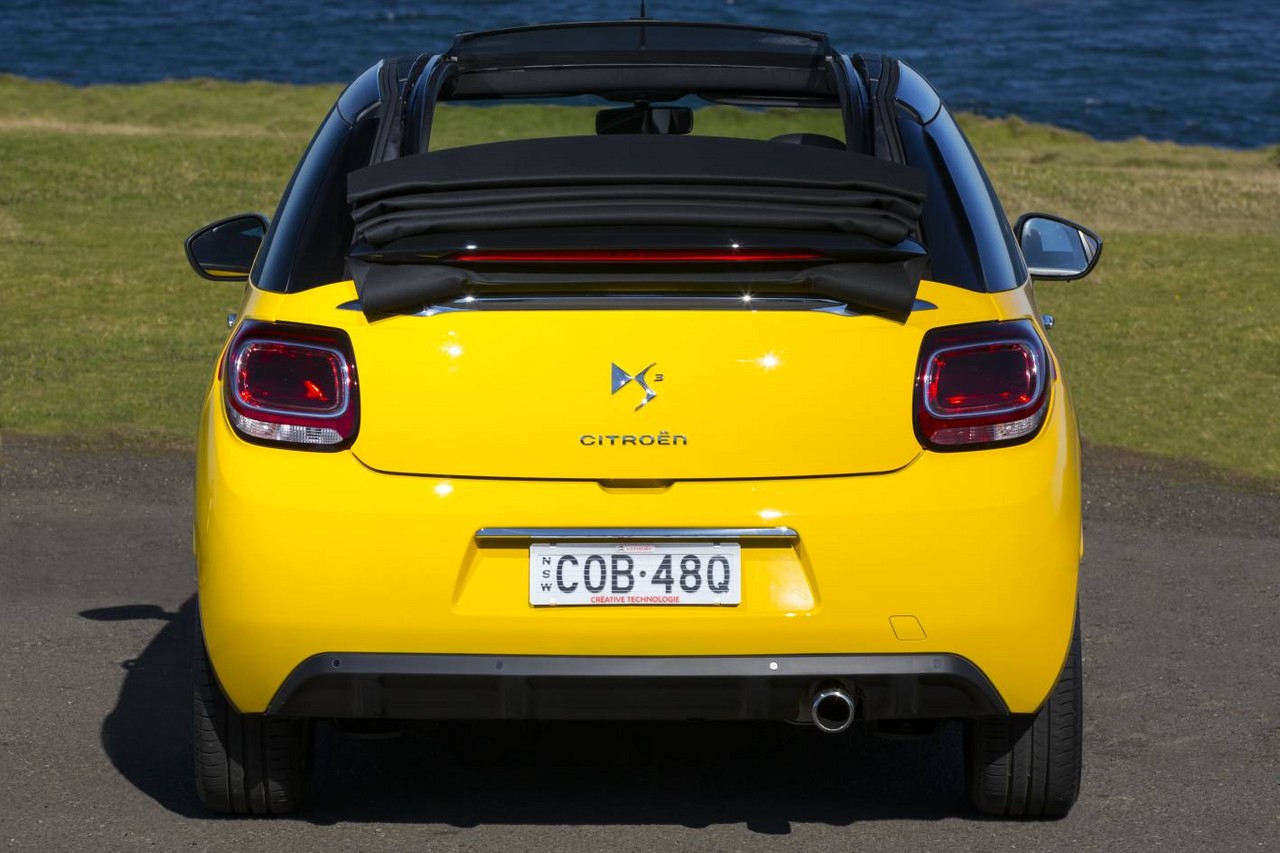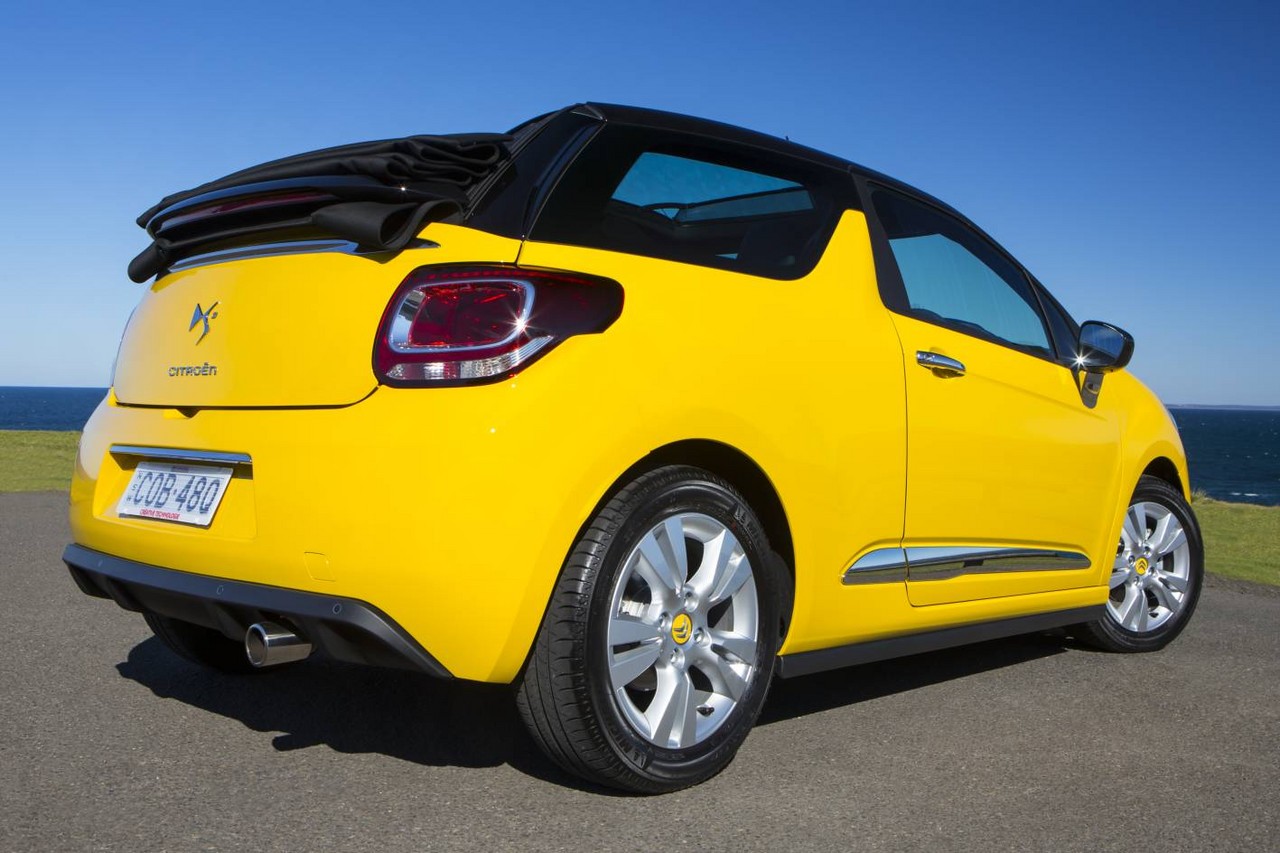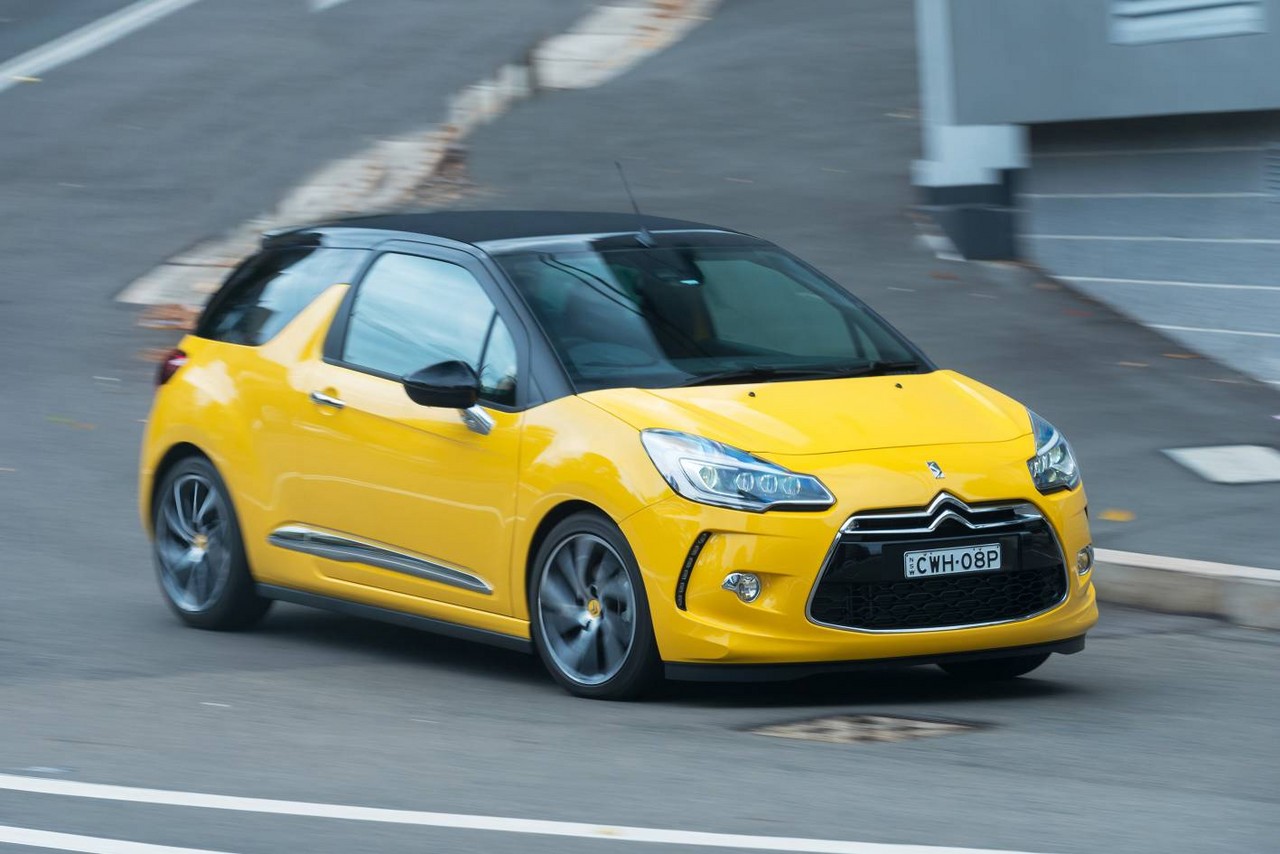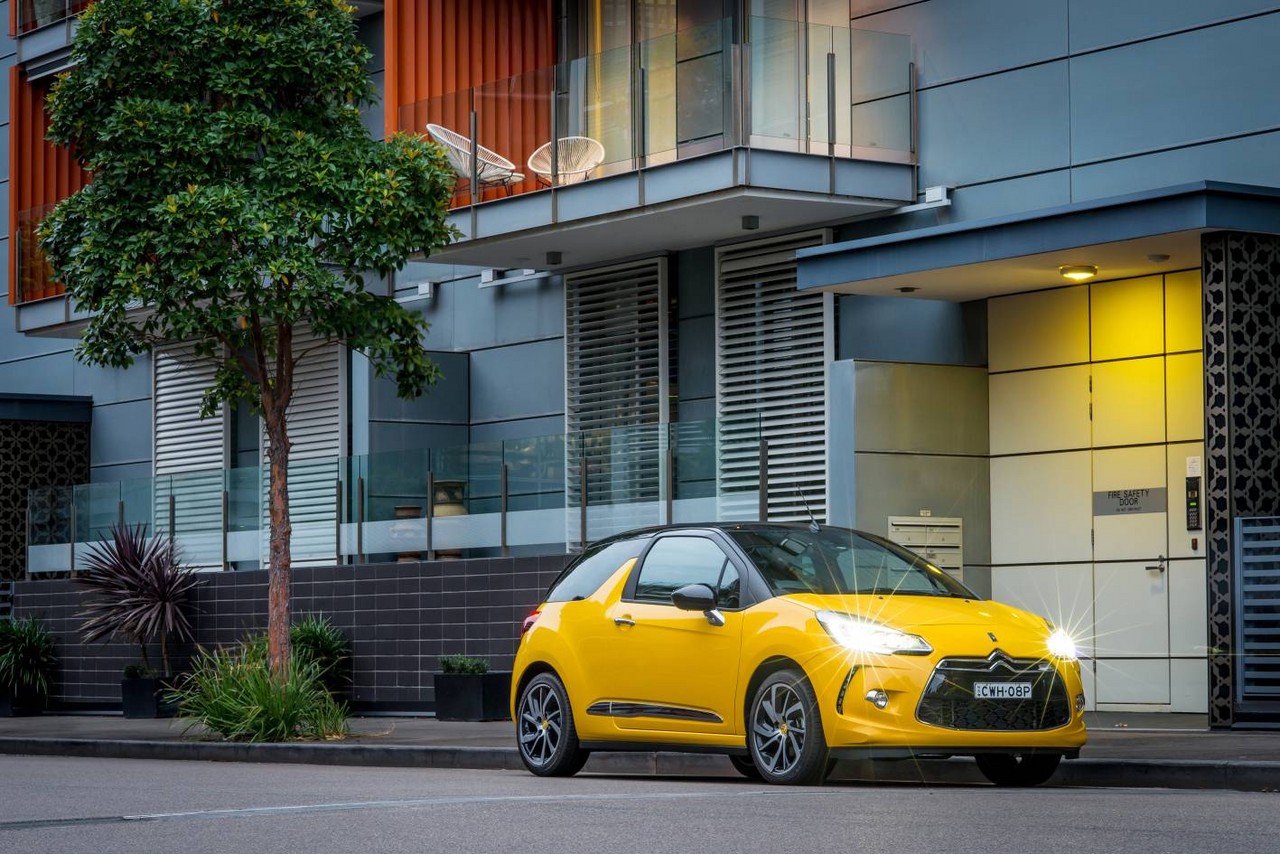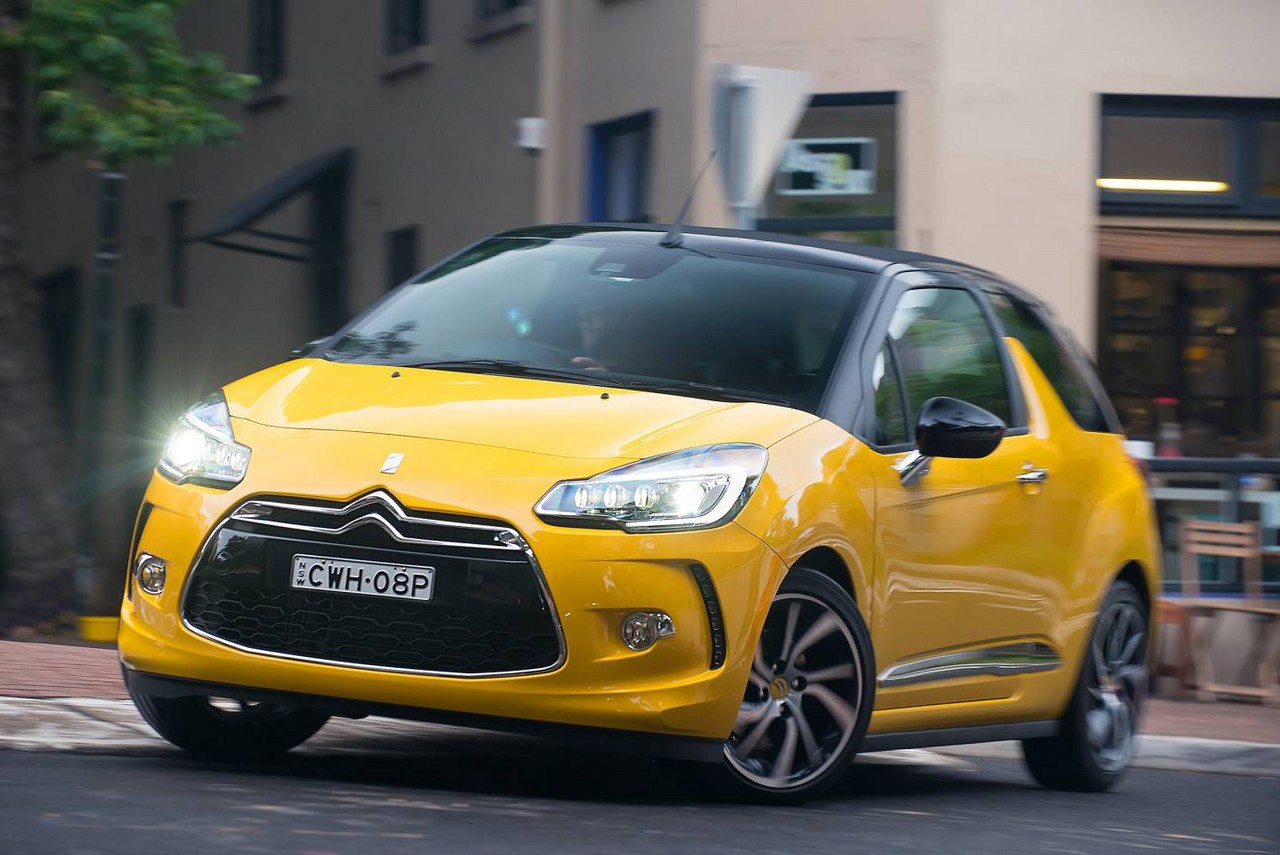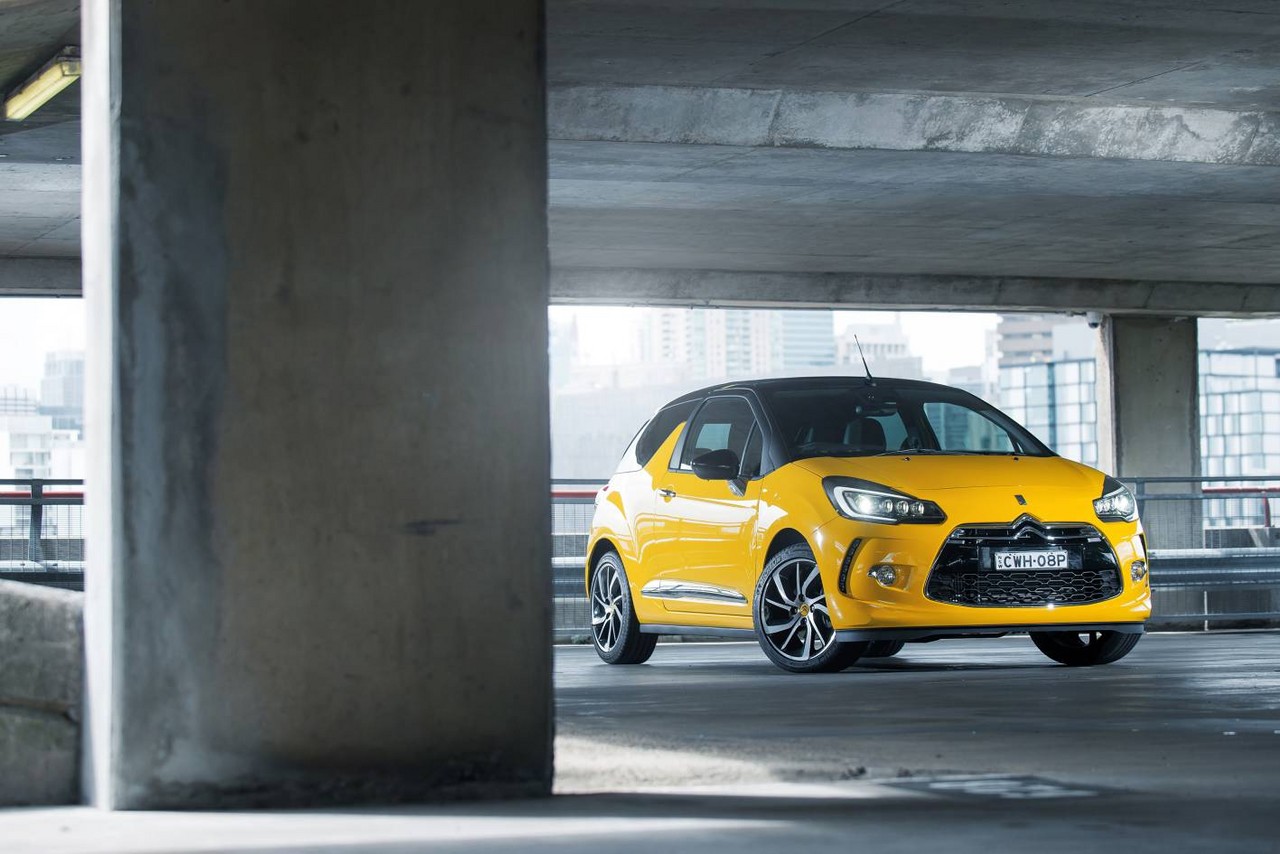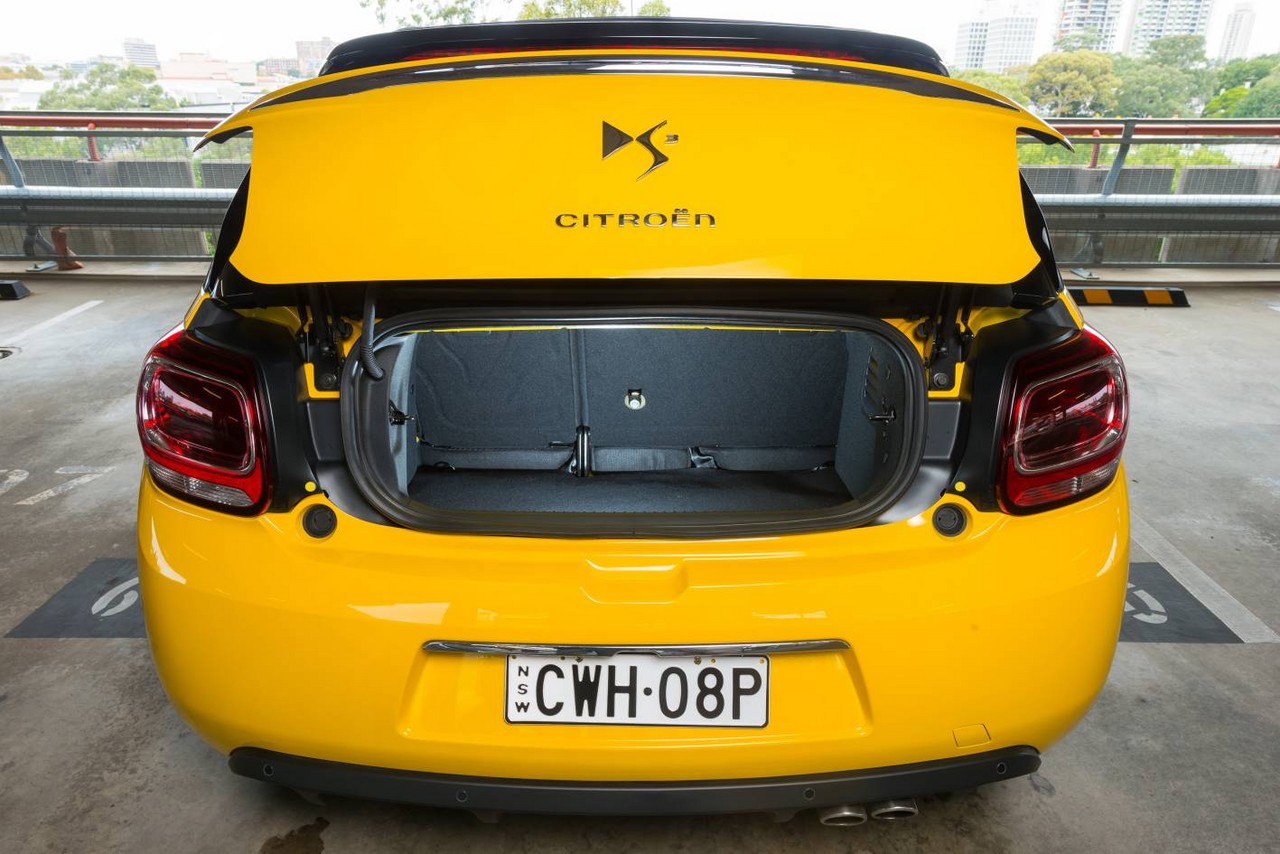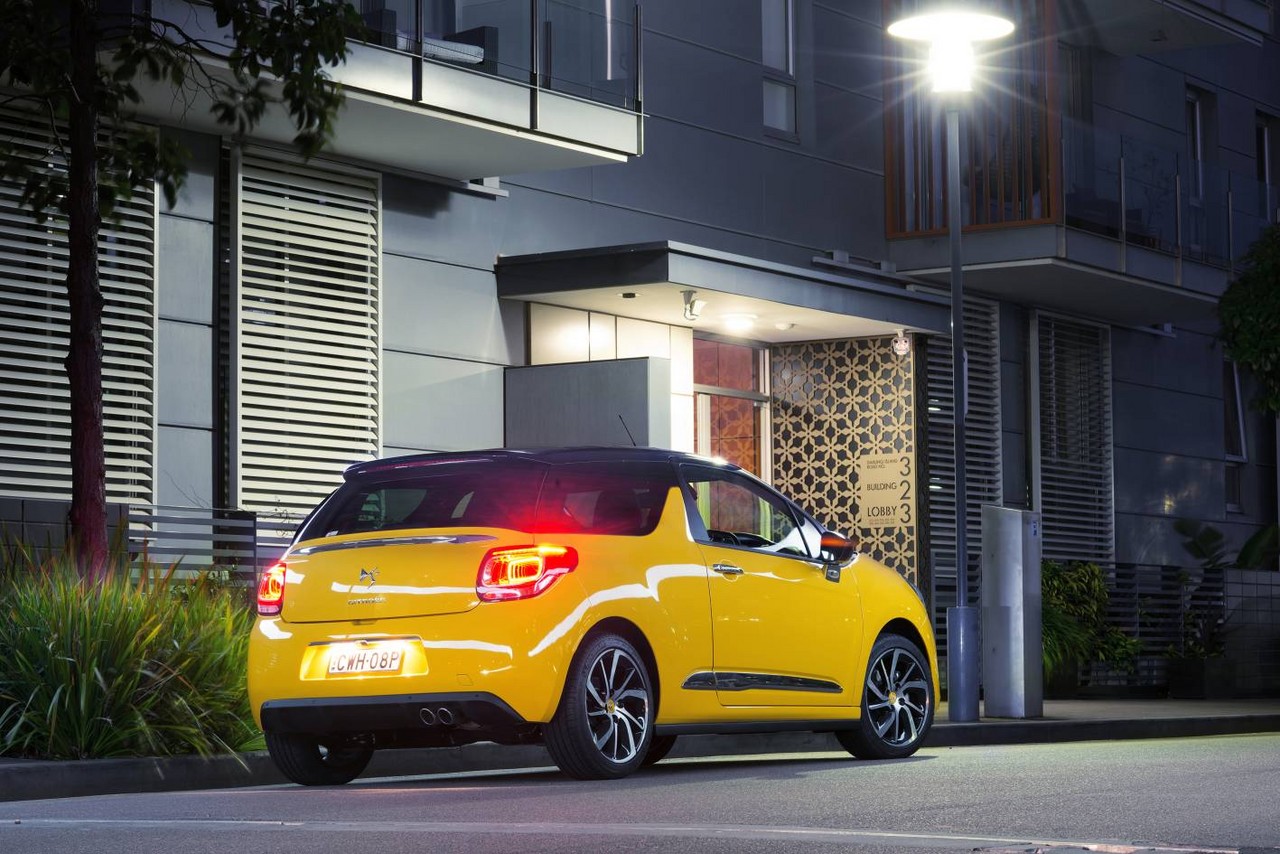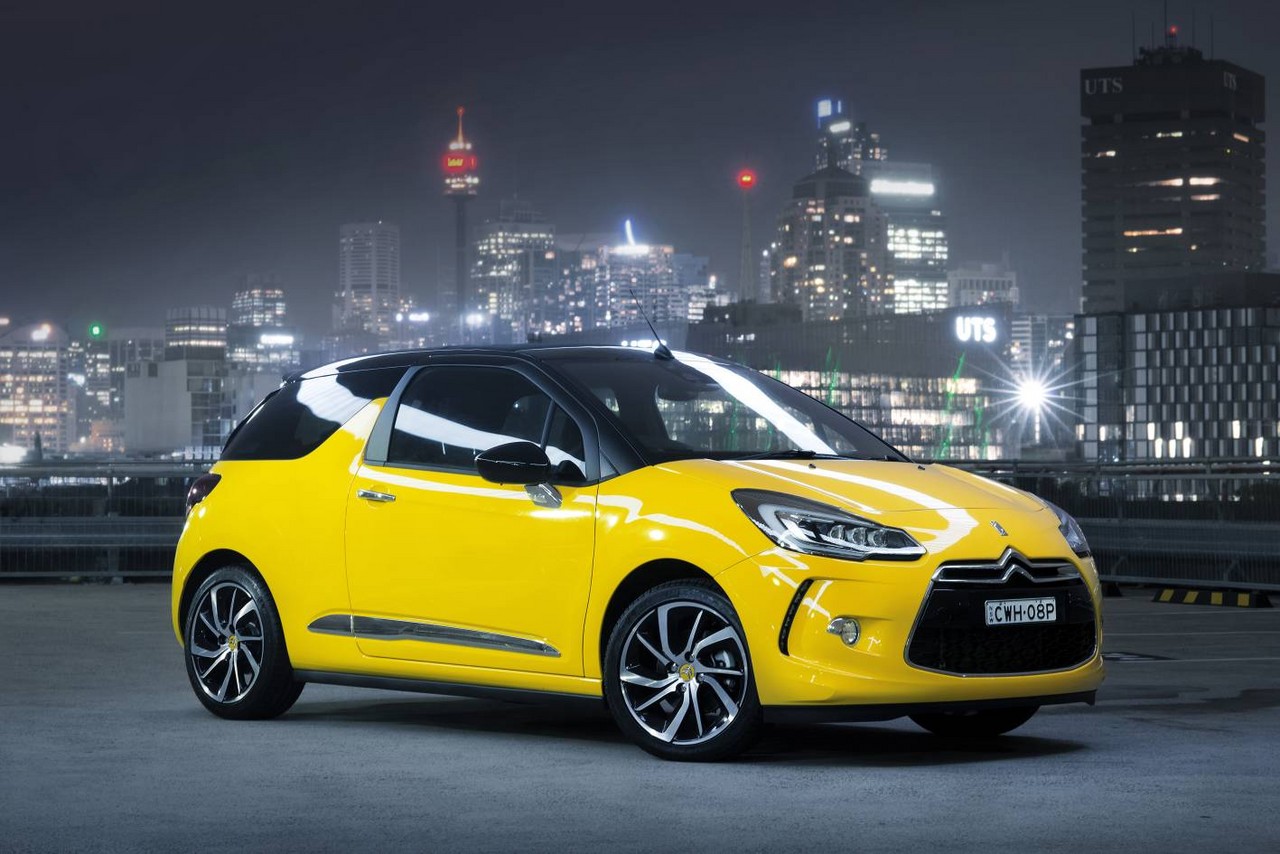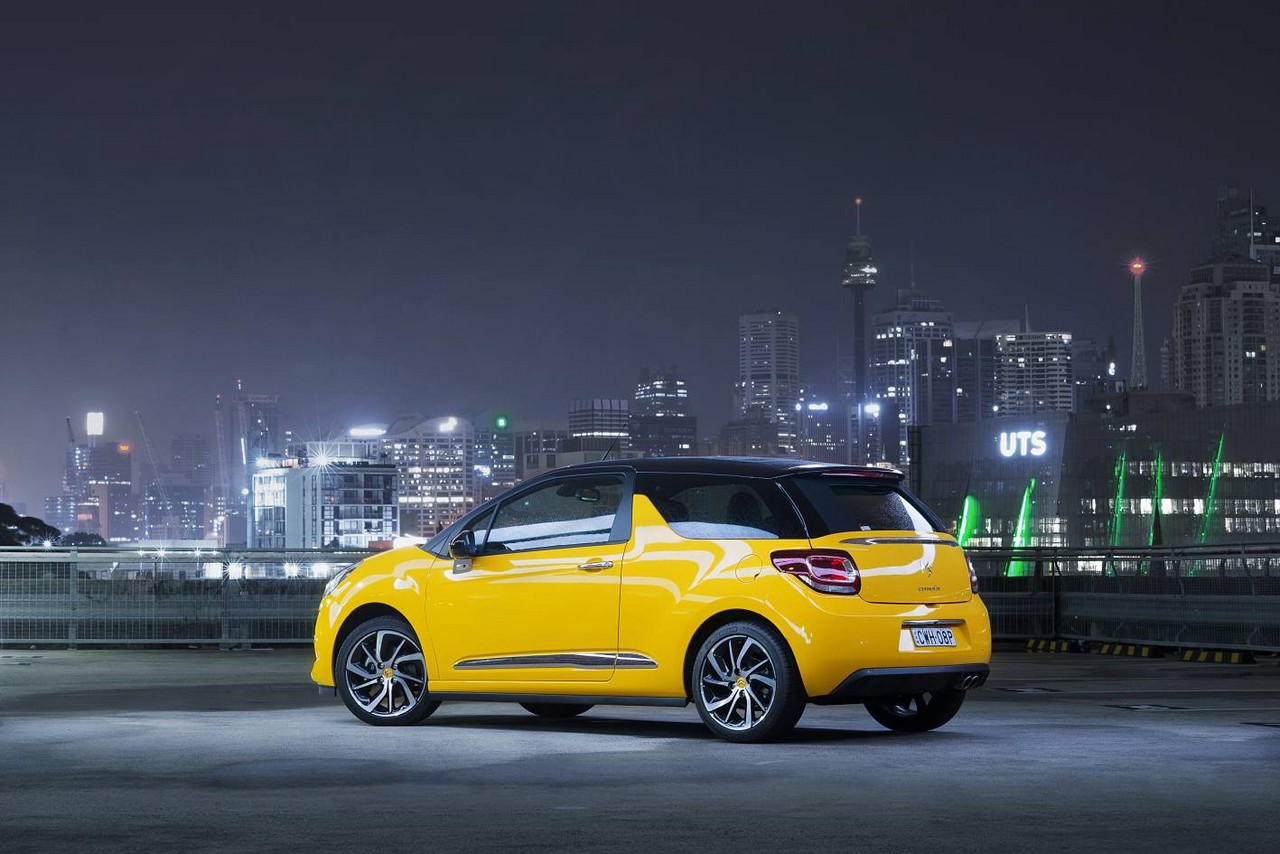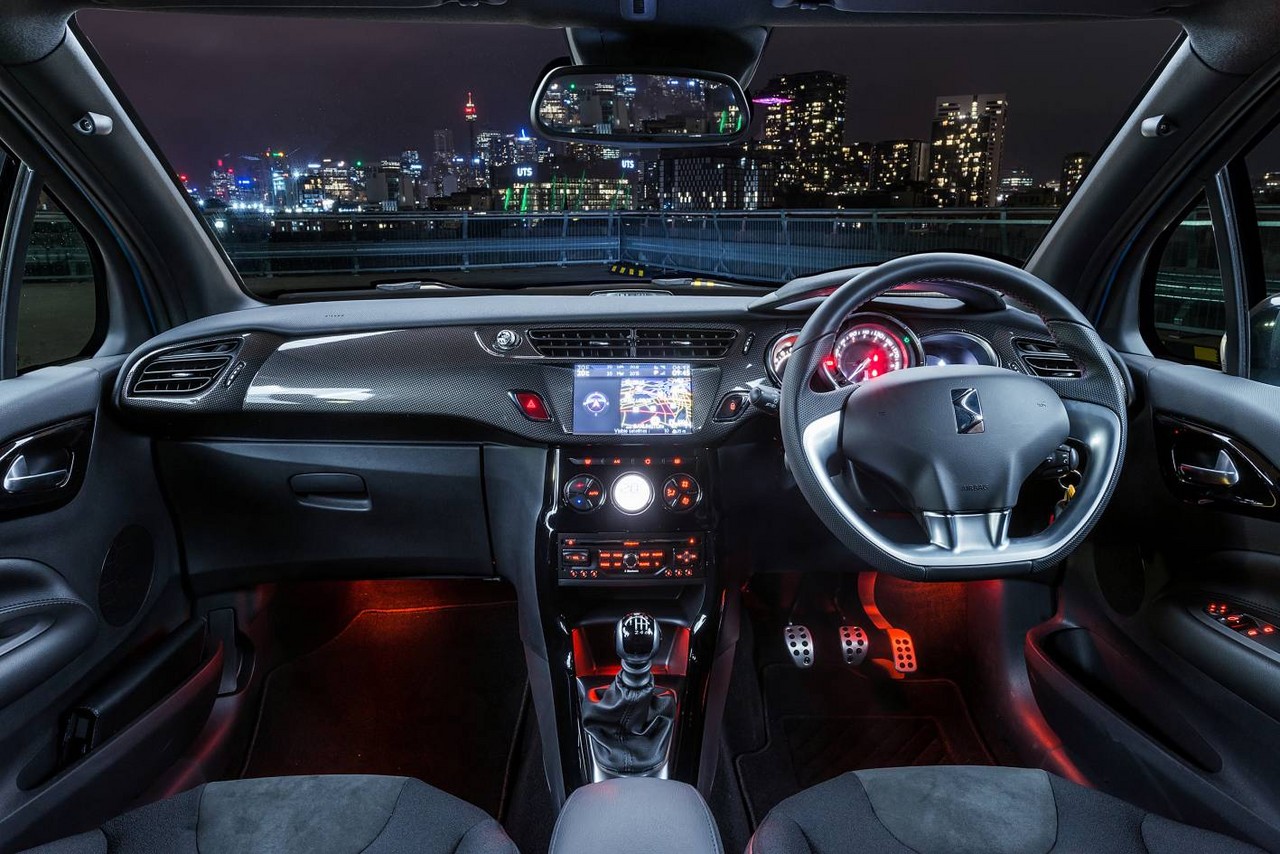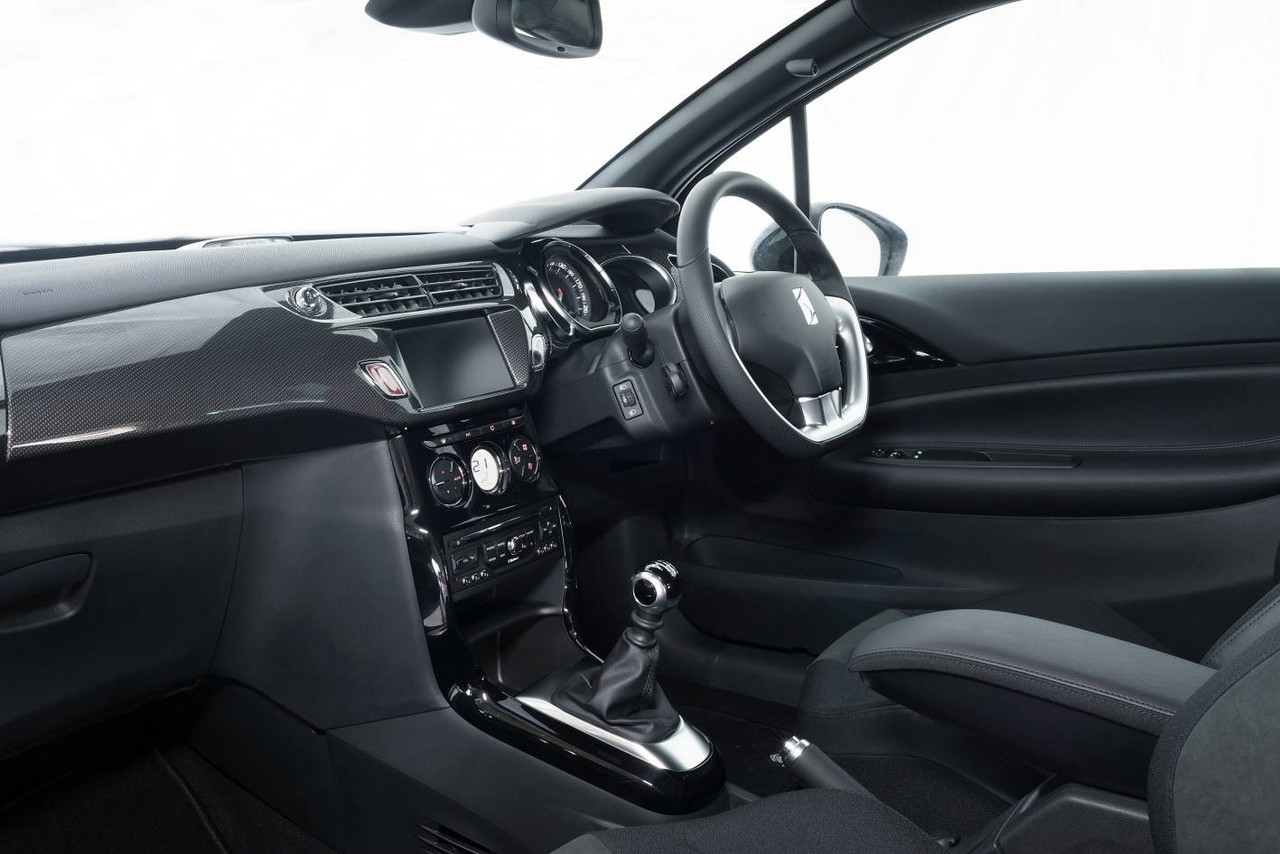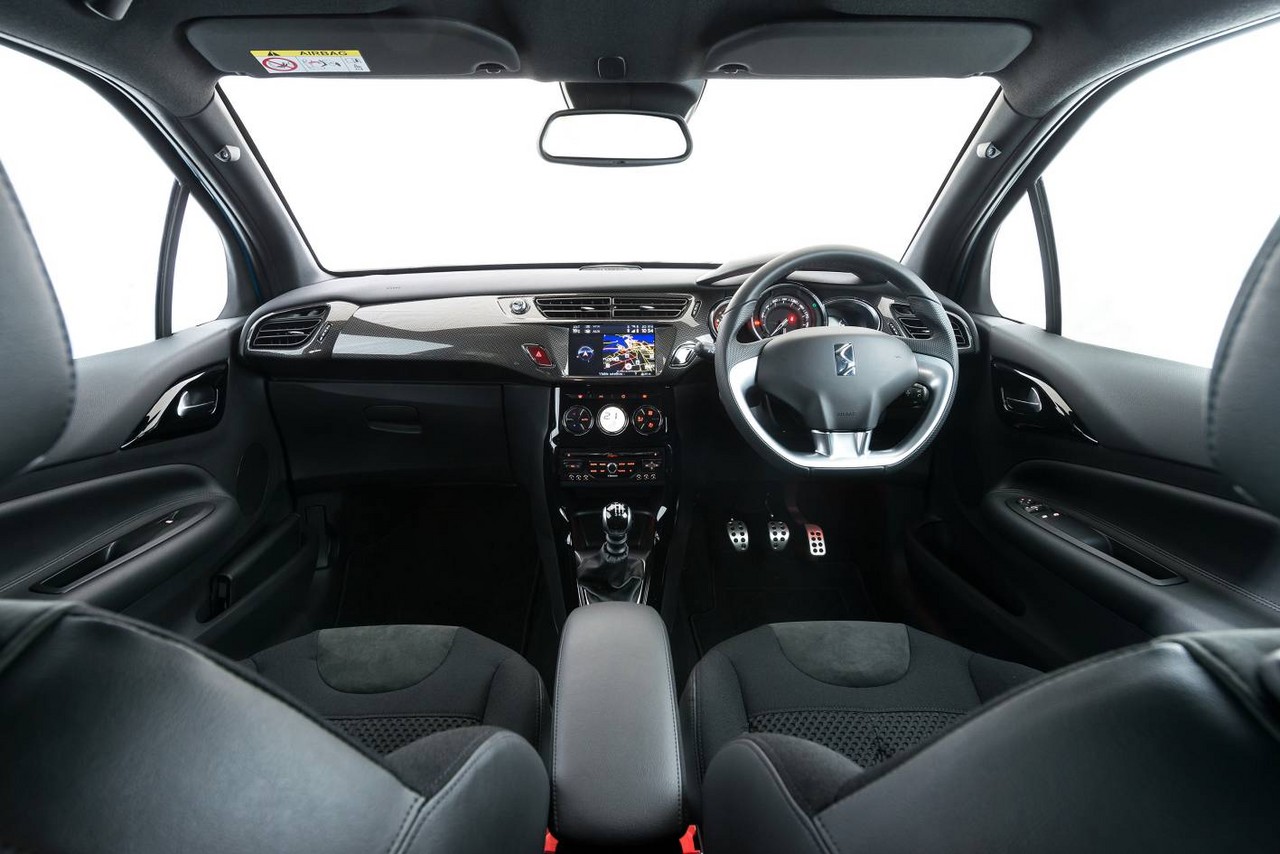
- Zesty turbocharged petrol engine for DS3 Cabrio DSport
- Agile handling
- Open-top appeal
- Folding rear seats and useful boot…
- … but narrow, letterbox-style opening
- Suspension lacks compliance
- Driver’s seat lacks support
- Visibility restricted by lowered roof
- Outdated four-speed automatic transmission for DStyle
Review: Citroën DS3 Cabrio (2013-17)
Review: Citroën Phase I DS3 Cabrio (2013-15)
Overview
Released in August 2013, the Citroën Phase I DS3 Cabrio was a five seat coach convertible with a power-operated canvas roof. Manufactured in Poissy, France, the front-wheel drive DS3 Cabrio was powered by naturally aspirated and turbocharged 1.6-litre petrol engines for the DStyle and DSport variants, respectively (see table below).
Dimensions and body
Like the Citroën DS3 hatchback on which it was based, the DS3 Cabrio was 3948 mm long, 1715 mm wide, 1483 mm tall and had a 2464 mm long wheelbase. Kerb weights for the DStyle and DSport variants were 1208 kg and 1231 kg, respectively.
The DS3 Cabrio’s retractable roof had three positions – intermediate, horizontal and total – and could be operated at speeds of up to 120 km/h. While a black Noir Onyx roof was fitted as standard, optional roof colours included Infinite Blue and Moondust Grey DS Monogramme. Inside, cargo capacity was 245 litres with the rear seats in position, though this increased to 980 litres when they were folded down.
Steering and suspension
The DS3 Cabrio had electric power-assisted steering, MacPherson strut front suspension and a torsion beam rear axle.
| Variant | Engine | Trans. | Peak power | Peak torque |
|---|---|---|---|---|
| DStyle | 1598 cc EP6C petrol I4 | 4sp auto | 88 kW at 6000 rpm | 160 Nm at 4250 rpm |
| DSport | 1598 cc EP6DT turbo petrol I4 | 6sp man. | 115 kW at 6000 rpm | 240 Nm at 1400-4000 rpm |
Safety equipment
Standard safety equipment for the DS3 Cabrio included dual front airbags, front side airbags, full length curtain airbags, ABS, electronic brake force distribution, brake assist, electronic stability control, traction control and front seatbelts with pretensioners and load limiters; the brake lights would also flash during emergency braking situation.
Features
Standard features for the DS3 Cabrio DStyle included 16-inch ‘Ashera Neutral’ alloy wheels, a six speaker sound system with a digital sound processor, CD player, auxiliary inputs (3.5 mm/USB/iPod) and Bluetooth connectivity, air conditioning, a cooled glove box, cruise control with speed limiter, contoured front sports seats, front and rear fog lights, daytime running LEDs, rear parking sensors, 60/40 split and folding rear seats, a leather-wrapped steering wheel, remote central locking, power windows and mirrors, a height and reach adjustable steering wheel, height adjustable front seats, rear privacy glass, a 12 volt power outlet and an immobiliser. Inside, the DStyle variants had a Piano Black dashboard finishes.
The DS3 Cabrio DSport was further equipped with 17-inch ‘Bellone Black’ alloy wheels, a seven speaker HiFi sound system with a subwoofer, a satellite navigation system and floor mats. Inside, the DSport variants had a ‘Carbon Effect’ dashboard finish, though a ‘Gris Moondust’ finish was offered in conjunction with the Moondust Grey roof.
Related links
Review: Citroën Phase II DS3 Cabrio (2015-17)
Overview
Released in Australia in April 2015, the Citroën Phase II DS3 Cabrio range initially consisted of DSport variants that were powered by a new 1.6-litre turbocharged petrol engine (the e-THP 160, detailed below). The Phase II DS3 Cabrio range, however, is expected to feature DStyle variants when a new automatic transmission becomes available.
Visually, the Phase II DS3 Cabrio DSport could be identified by its:
- Xenon-LED headlights which consisted of three independent LED modules and a xenon module, the latter used to create a wide, uniform beam of light; and,
- 17-inch ‘Aphrodite’ black alloy wheels.
e-THP 160 engine
Replacing the THP 155 engine, the e-THP had an aluminium alloy block and cylinder head, a twin-scroll turbocharger, double overhead camshafts, direct fuel injection (up to 200 bar), four valves per cylinder, variable valve timing and a compression ratio of 10.5:1.
Significantly, the e-THP 160 engine also had a ‘Stop-Start function’ that enabled it to shut down when the vehicle was stationary in traffic to reduce fuel consumption. Other energy reduction measures included a volume flow-controlled oil pump and on-demand water pump.
Requiring 95 RON premium unleaded petrol, fuel consumption for the DS3 Sport over the combined ADR 81/02 test cycle was 5.6 litres per 100 km.
| Variant | Engine | Trans. | Peak power | Peak torque |
|---|---|---|---|---|
| DSport | 1598 cc EP6DT turbo petrol I4 | 6sp man. | 121 kW at 6000 rpm | 240 Nm at 1400 rpm |
Safety equipment
Standard safety equipment for the DS3 Cabrio was extended to include Citroën’s ‘Active City Brake’. Operating at speeds under 31 km/h, Active City Brake used a short-range laser sensor – mounted ahead of the rear-vision mirror to monitor obstacles up to 10 metres ahead of the vehicle – and provided autonomous braking if a collision was anticipated. Active City Brake had two modes:
- Crash Avoidance: for speeds up to 27 km/h; and,
- Crash Mitigation: for speeds from 28 km/h to 30 km/h
Features: DS3 Cabrio DSport
Standard features for the Citroën DS3 Cabrio DSport were extended to include LED and xenon headlights (‘DS LED Vision’), automatic headlights, rain-sensing wipers, a rear view camera, rear parking sensors, door mirrors with heating and fold functions, an electrochromatic rear view mirror and tyre pressure monitoring.
Related links
